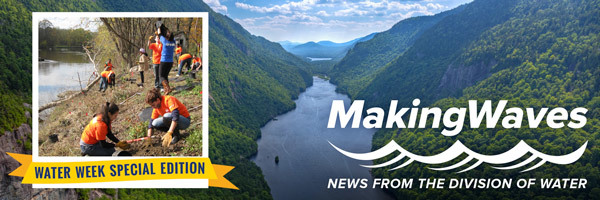MakingWaves - Water Week Special Edition
The New York State Department of Environmental Conservation sent this bulletin on 05/02/2017 01:10 PM EDT |
| DEC Delivers - Information to keep you connected and informed from the NYS Department of Environmental Conservation |
| Share or view as a web page || Update preferences or unsubscribe |
|
|
Theme for 2017: Nonpoint Sources of PollutionCelebrate Water Week by learning more about nonpoint sources of pollution and how you can help protect, restore and conserve water for the future! Today’s topic: Ways to Reduce Nonpoint Source Pollution Did you know?
Test your water knowledgeWhat state law was enacted in 2010 to reduce the amount of phosphorus getting into New York’s waters? (Answer is below) Learn moreOn DEC’s website, you can find information about:
Answers: 1) Dishwasher Detergent and Nutrient Runoff Law. When fertilizing your lawn, use phosphorus-free fertilizer. Phosphorus is one of the leading causes of water pollution. Even if you live far from a water body, excess phosphorus from your lawn can wash off and pollute lakes and streams, harming fish and ruining boating and swimming.
|


